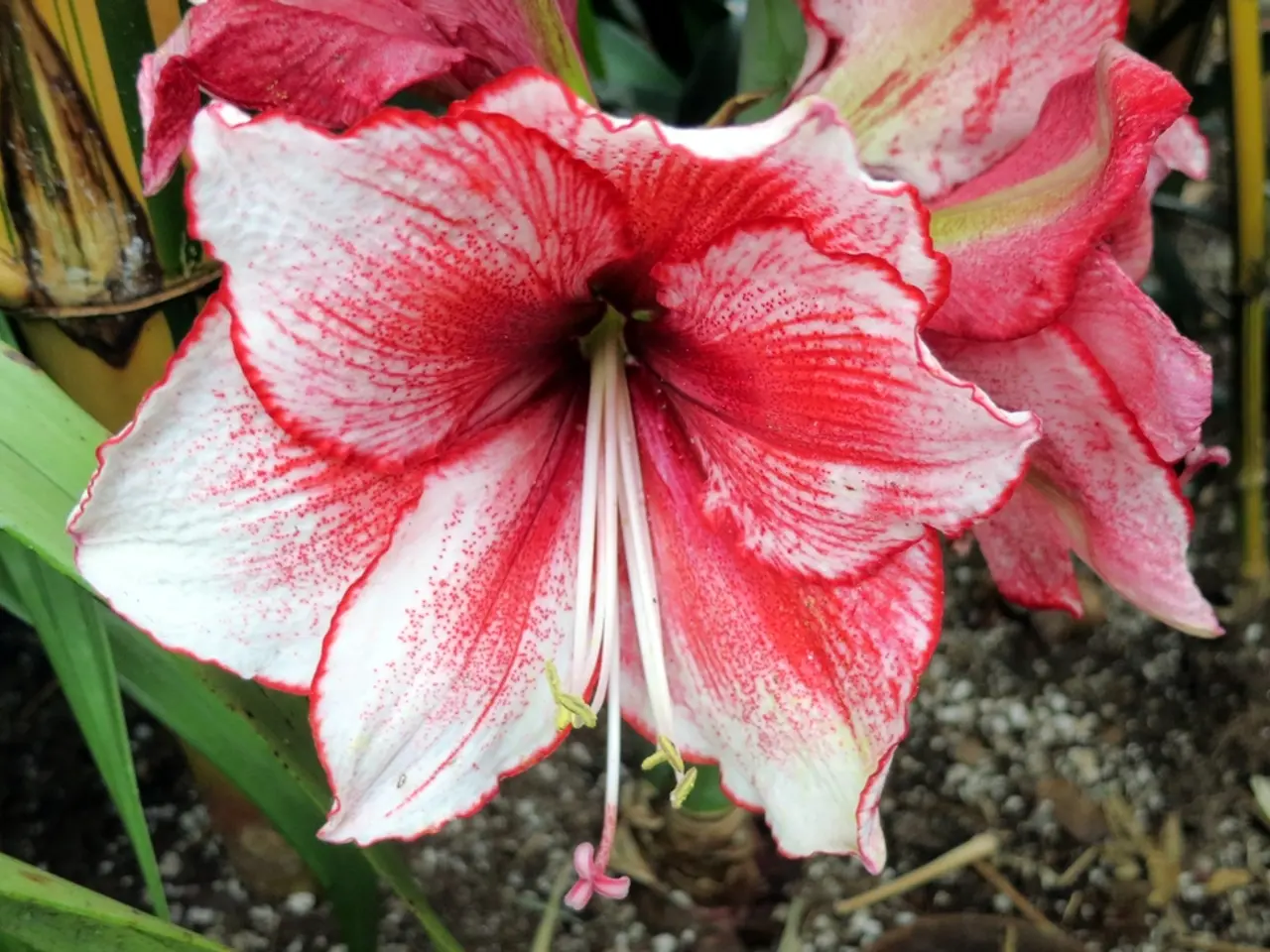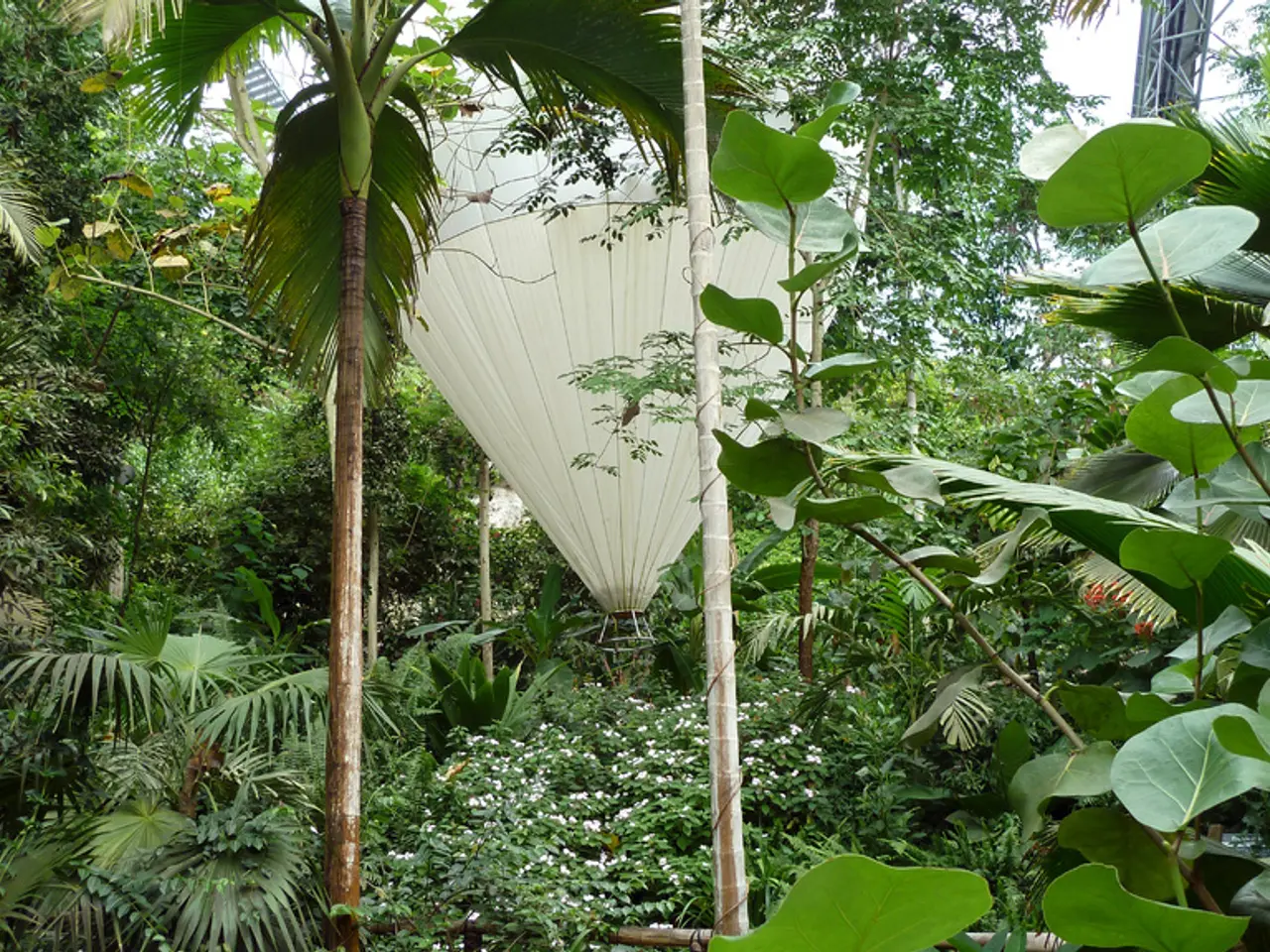Essential Soil Conditions for Hydrangeas: Insights Revealed
In the world of gardening, hydrangeas are a popular choice for their stunning blooms and versatile growth. To ensure the best possible growth and the most vibrant flowers, it's essential to understand the ideal soil conditions for these beautiful plants.
Hydrangeas thrive in moist, well-draining, and fertile soil. These plants require soil that retains moisture without becoming soggy, making clay soil a suitable option as it holds moisture well, provided it is well-draining to prevent root rot. Adding compost or well-rotted manure can improve moisture retention and fertility [1][3].
When preparing soil for hydrangeas, it is important to replenish vital minerals and nutrients and break up and loosen any compacted soil. Loosen and break up compacted soil to a depth of at least 6 inches. Mix in organic matter such as dehydrated cow manure, garden compost, or peat moss to the soil, up to a 1/3 concentration [1].
Hydrangeas require protection from extremes. They benefit from partial shade or filtered sunlight and protection from drying winds or cold winter drafts [1][3].
Soil pH plays a significant role in the colour of hydrangea flowers. Certain hydrangea types, such as mopheads, lacecaps, or bigleaf hydrangeas like Hydrangea macrophylla, depend on the availability of aluminum ions, controlled by soil pH, for their colour.
Acidic soil (pH 5.0 to 5.5) allows aluminum to be available to the plant, producing blue flowers. Neutral to slightly acidic soil (around pH 5.5 to 6.0) can lead to mauve or purple flowers. Alkaline soil (pH 6.0 and above) makes aluminum unavailable, resulting in pink flowers [2][4].
To change soil pH for desired flower colours, you can acidify the soil by adding materials like elemental sulfur or aluminum sulfate, which lowers pH and increases aluminum availability, producing blue flowers. Conversely, to encourage pink blooms, you can raise pH by adding lime (garden lime or dolomitic lime), which makes the soil more alkaline and reduces aluminum availability [2][4].
In containers, maintaining blue flowers requires using ericaceous (acid-loving) fertilisers to keep the soil acidic [4]. By monitoring and adjusting soil pH within these ranges, gardeners can influence hydrangea flower colour while ensuring the soil stays moist and fertile for healthy growth.
Lastly, when planting hydrangeas, dig a hole that is twice as wide as the plant's root system and about 6 inches deeper than the plant's pot for proper root expansion. Water the plant thoroughly after filling the hole with soil to eliminate air pockets and settle the plant in. Add a layer of mulch about 2-3 inches thick around the planting site in spring, but avoid placing it right up against the base of the plant [1].
With these tips in mind, you're now equipped to cultivate beautiful, colourful hydrangeas in your garden. Happy gardening!
[1] University of Vermont Extension. (2021). Hydrangeas. Retrieved from https://www.uvm.edu/extension/yard-garden/hydrangeas [2] Missouri Botanical Garden. (2021). Hydrangea. Retrieved from https://www.missouribotanicalgarden.org/PlantFinder/PlantFinderDetails.aspx?kempercode=t100 [3] Cornell University Cooperative Extension. (2021). Hydrangea. Retrieved from https://extension.psu.edu/hydrangeas [4] Royal Horticultural Society. (2021). Hydrangea. Retrieved from https://www.rhs.org.uk/plants/27970/Hydrangea-macrophylla/Details
Hydrangeas are not limited to just the gardening world; they also flourish in home-and-garden landscapes, adding a touch of beauty to one's lifestyle. To create the perfect home-and-garden setting for hydrangeas, it's crucial to maintain soil that is moist, well-draining, and rich in organic matter, thus promoting vibrant blooms.







